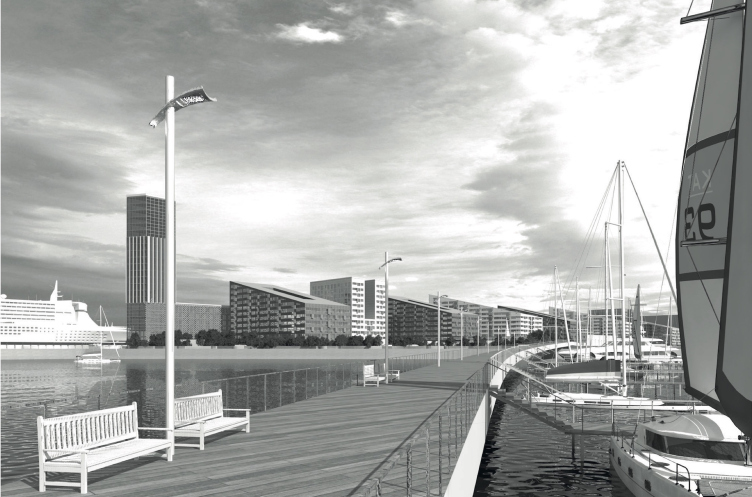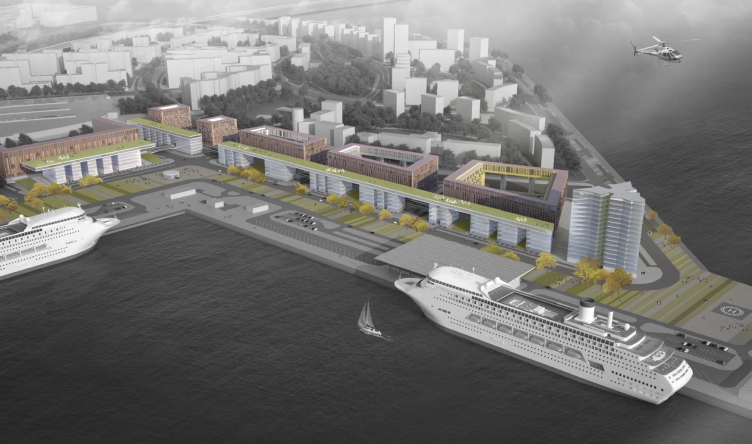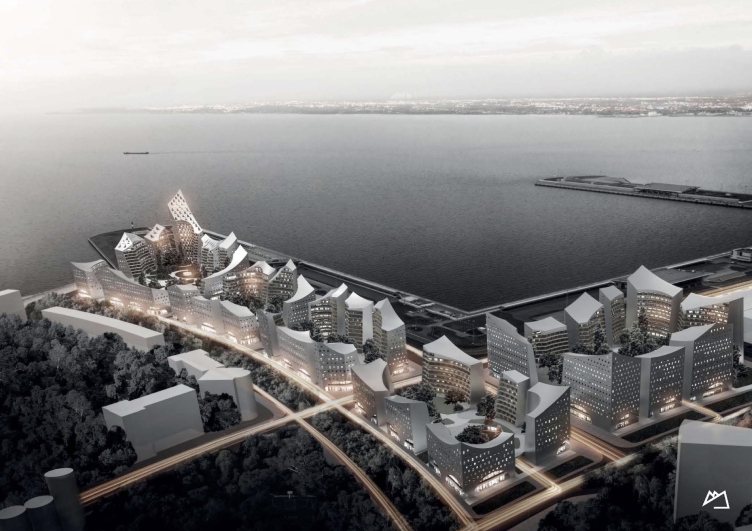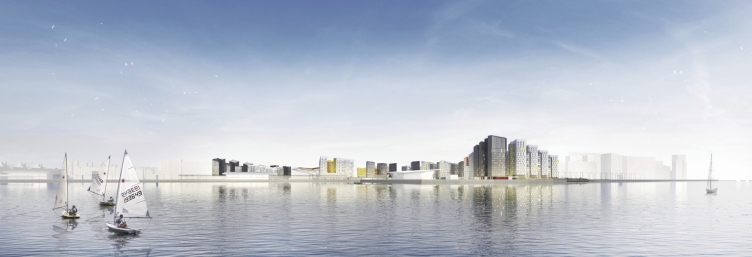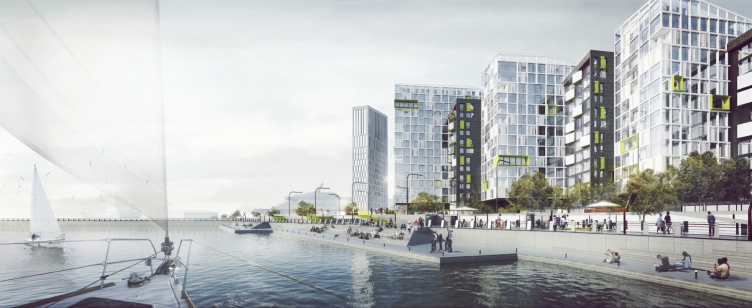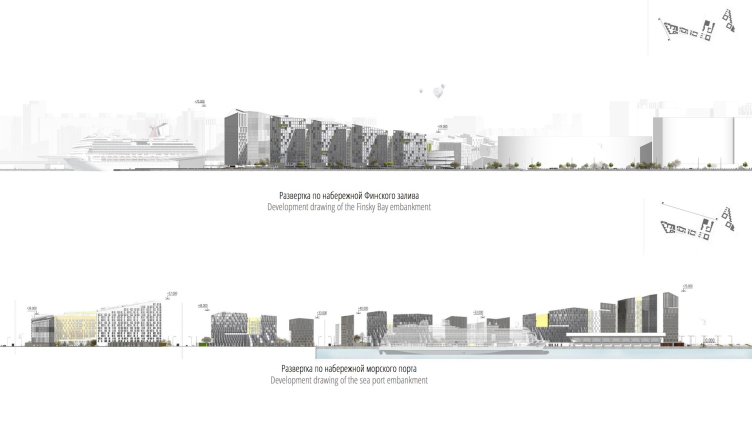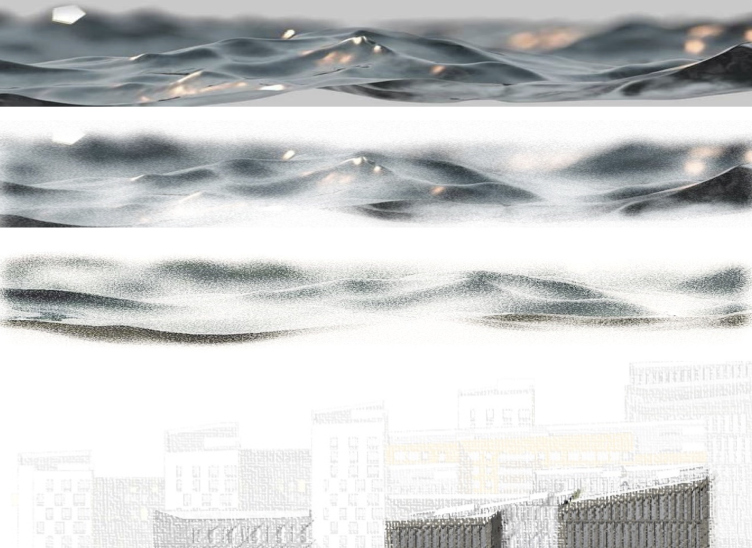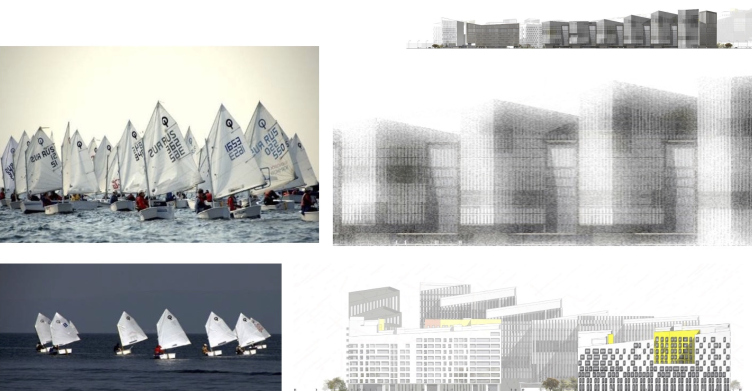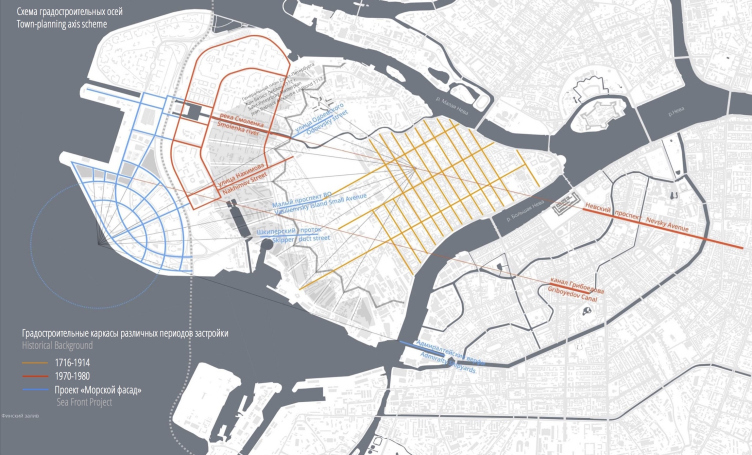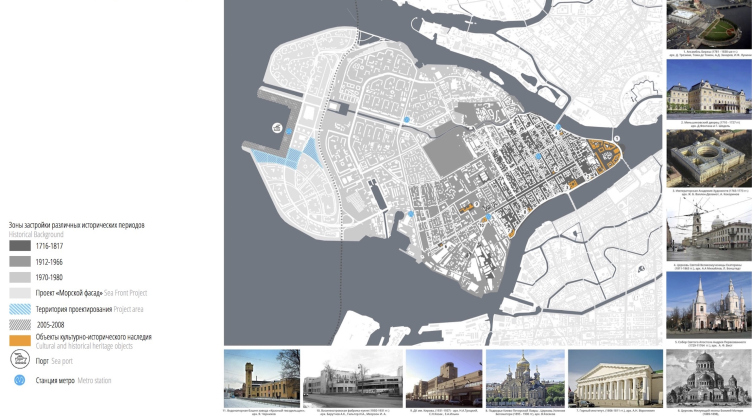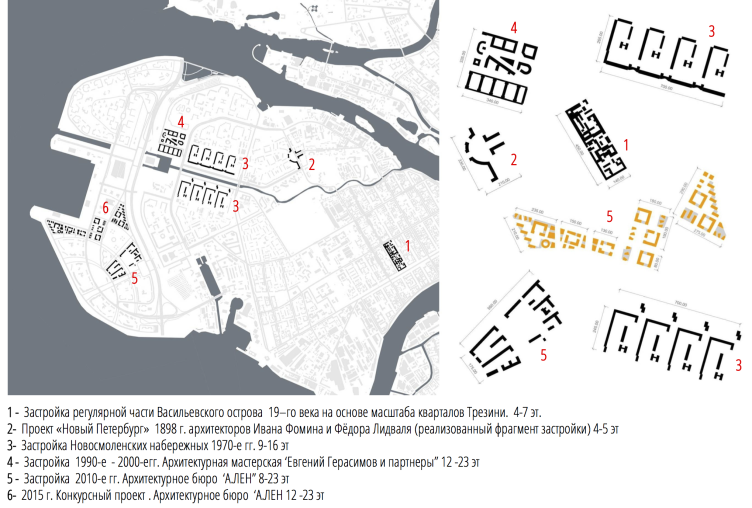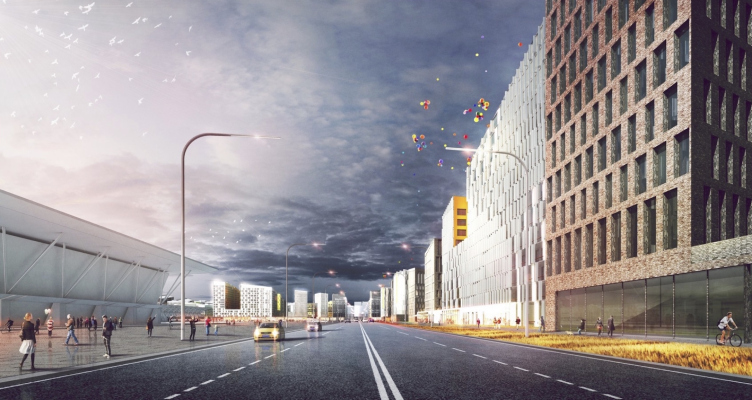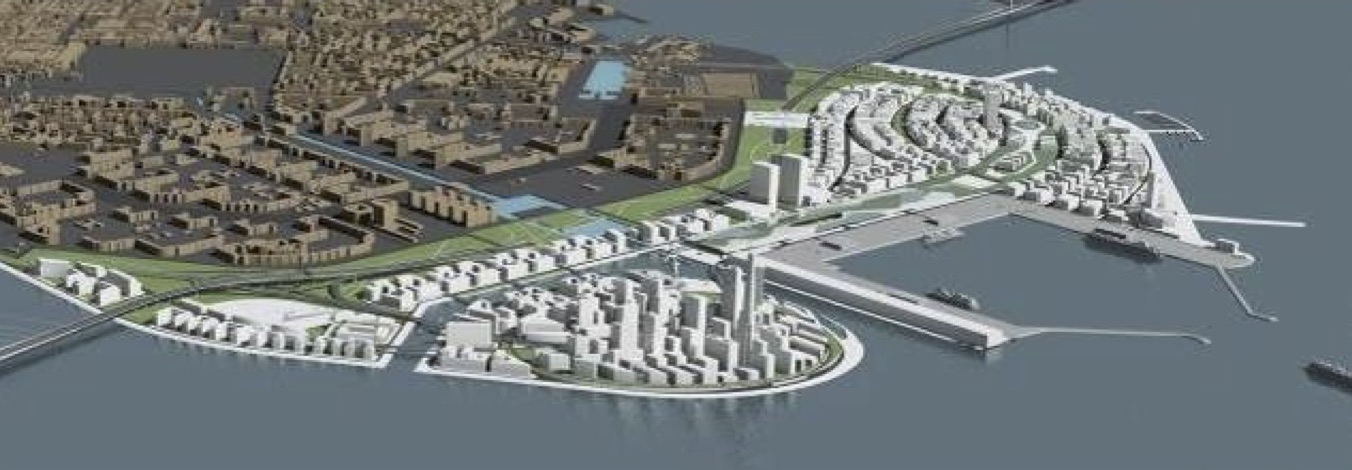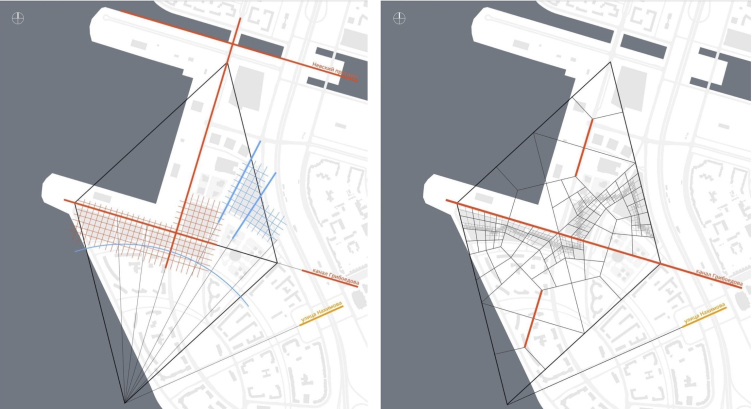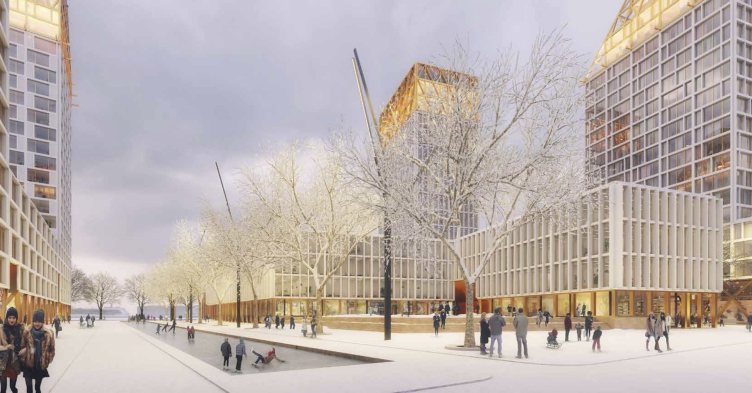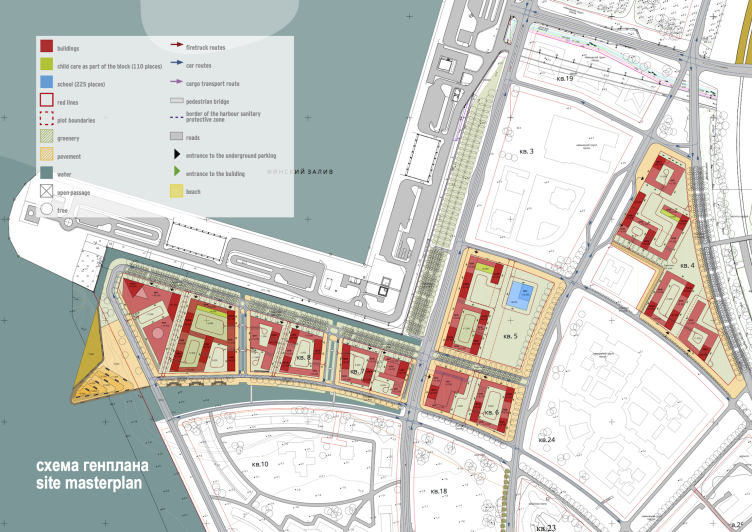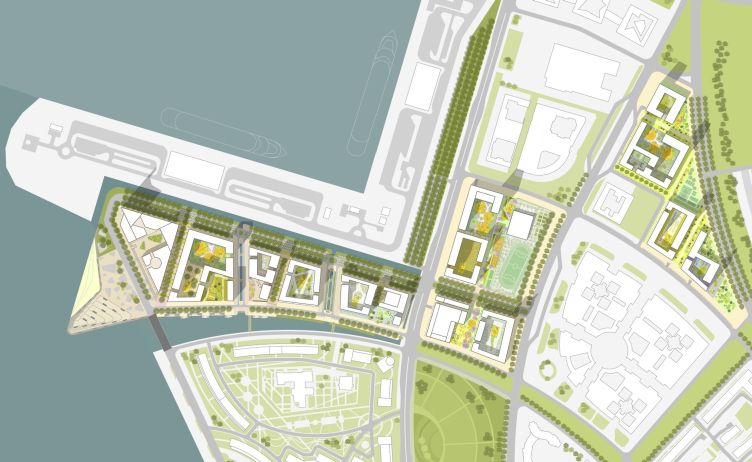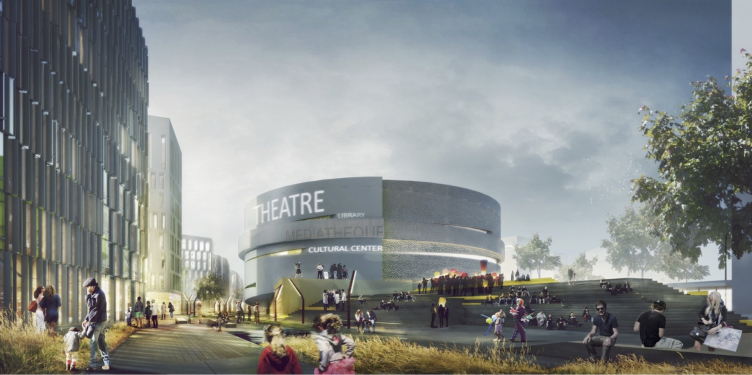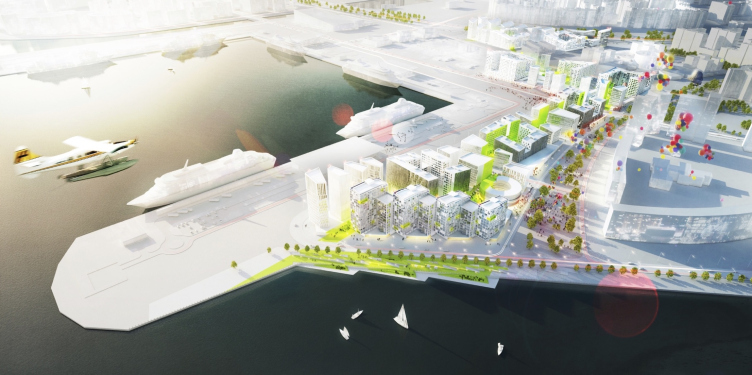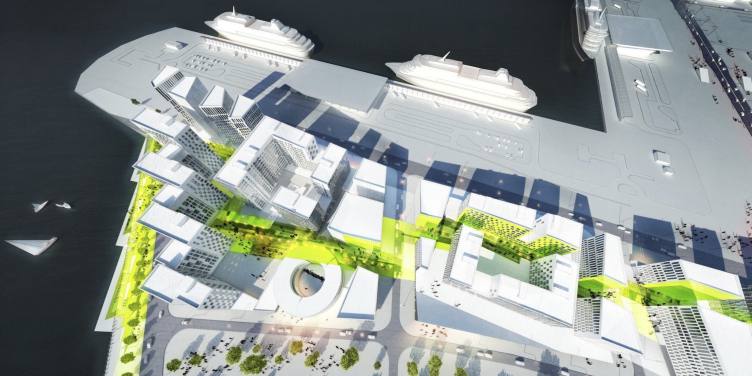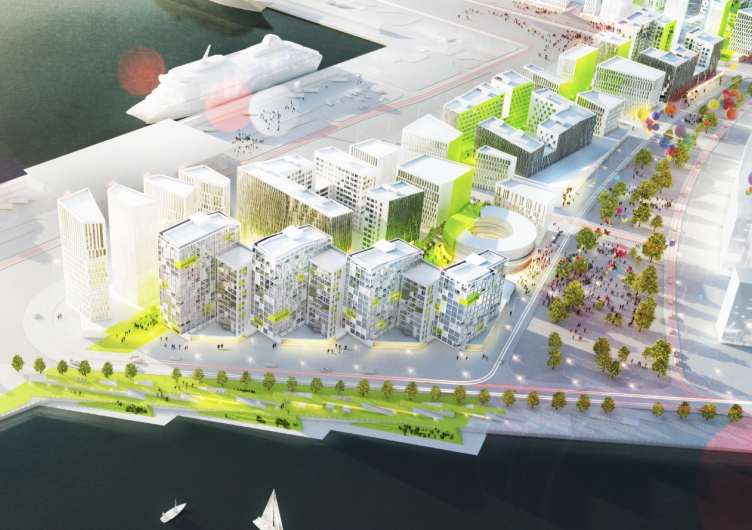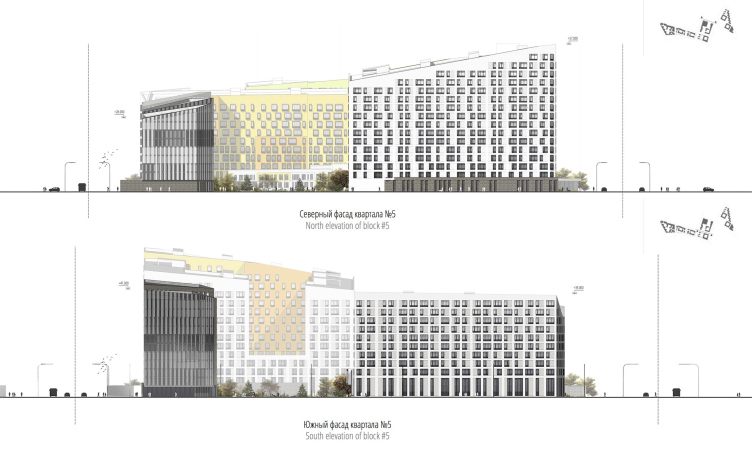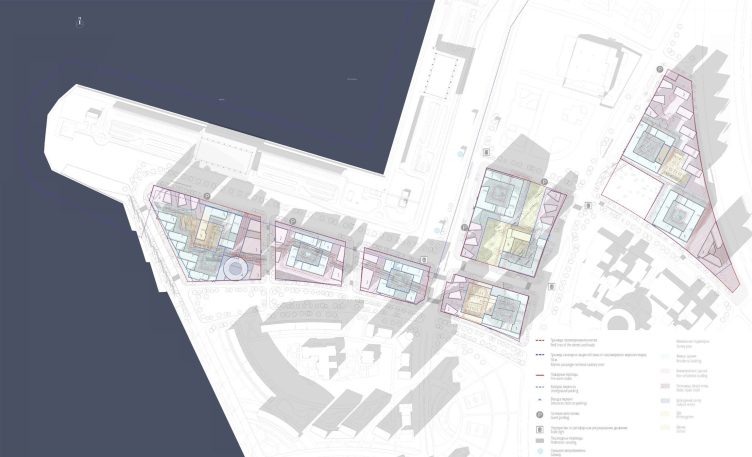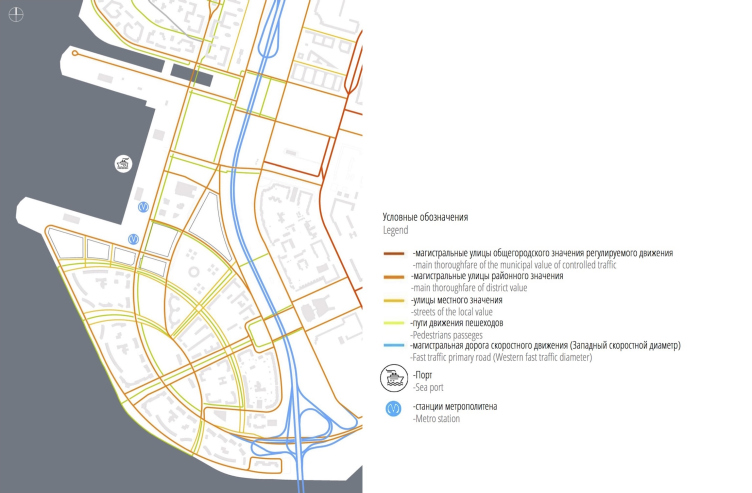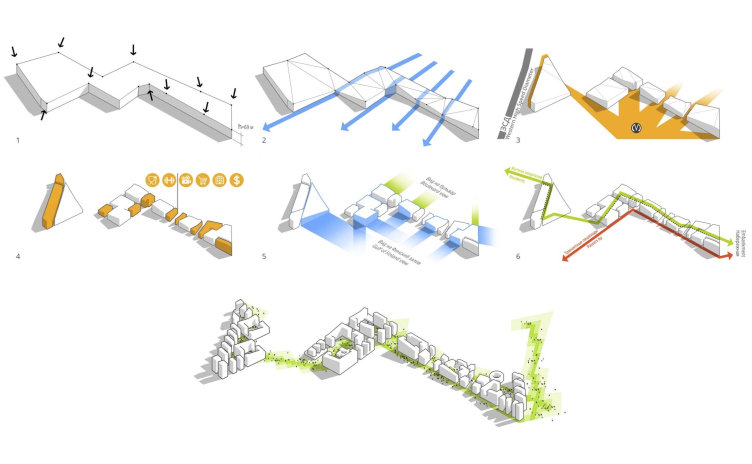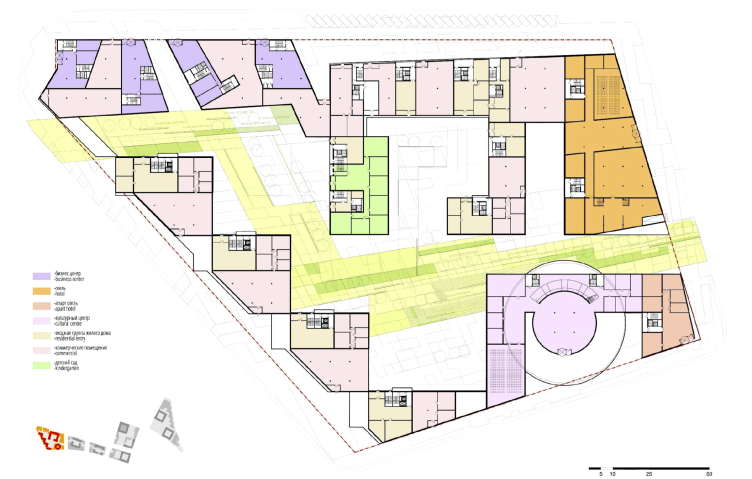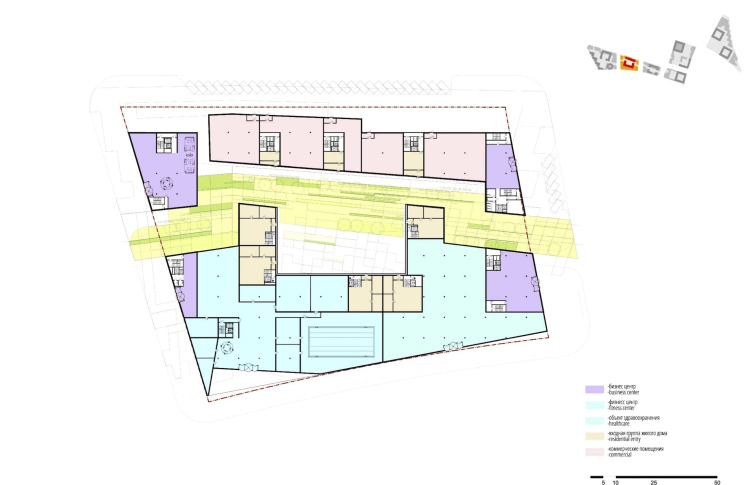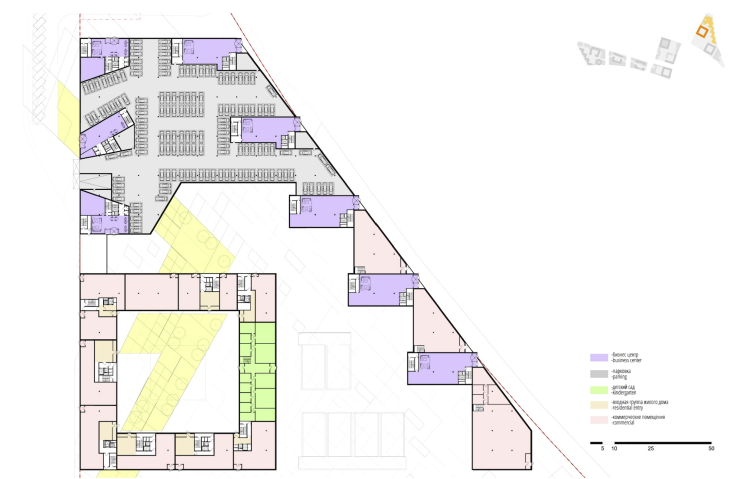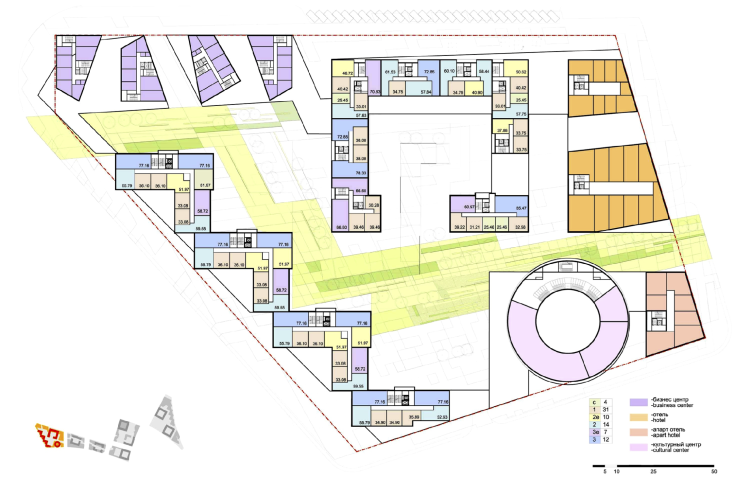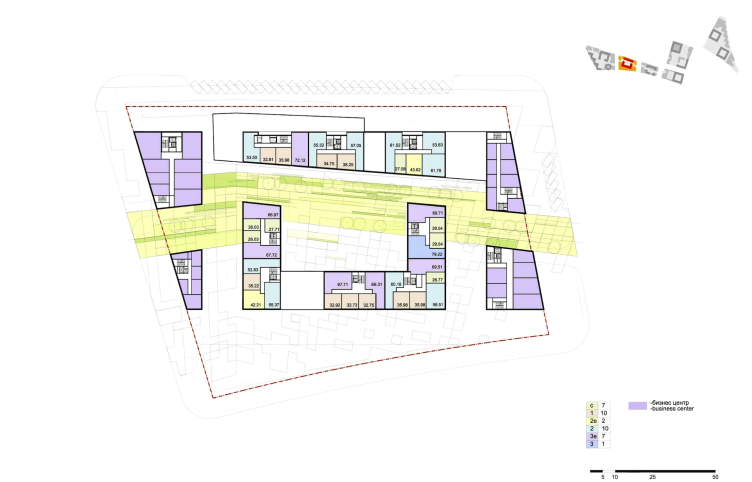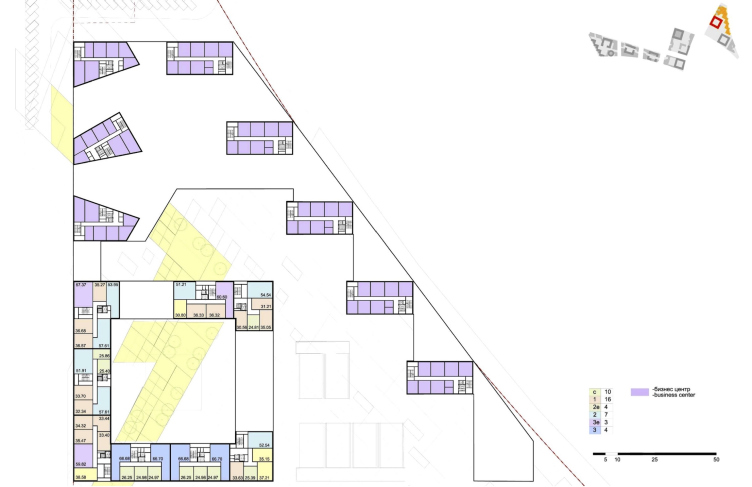Archi.ru: Please share about the contest in more detail. As is the practice recently, it took place without much media coverage?
Sergey Oreshkin: Yes, as a matter of fact, it took some time before I learned about this contest myself - yes, such things are common in this country. Actually, the organizers have a point here - simply because an open contest attracts a crazy number of participants, and this ends up in a waste of time and resources. Even for the most moderate-size team, this means at least two architects that must work two months, plus consider the software and whatnot. In terms of efficiently spending your resources, this is completely wrong. Basically, yes, this is a difficult question - based on which criteria you invite companies to participate. On the one hand, you must encourage the young talent; on the other hand, you want to work with established professionals, so you need to differentiate the process somehow.
The path that "Glorex Development" took was indeed civilized. The customer invited the company "TOPMARK" as the organizer, and "MARCH" as the consultant, and these all were the industry-renowned names - on behalf of "MARCH", for example, it was Eugene Ace that did the consulting; Elena Gonzales was the curator from "MARCH Lab".
The organizers invited to participate the companies with a good reputation and ones that were known to be active in the field of town-planning; such Russian companies being "Ostozhenka", "Studio 44", and us. We all constantly meet at contests of various levels and we have a lot of projects in construction. As far as our company is concerned, over the last ten years, our projects yielded about 450 000 square meters of residential housing stock built and launched into operation; almost a million square meters is being designed now, and we did more concepts and proposals than I care to remember, so, with all due modesty, we are professionals in this field.
Concept of the integrated social and housing project on the Vasilyevsky Island. A.Len. Photo courtesy by "Glorax Development"
Concept of the integrated social and housing project on the Vasilyevsky Island. Ostozhenka Bureau. Photo courtesy by "Glorax Development"
Concept of the integrated social and housing project on the Vasilyevsky Island. Studio 44. Photo courtesy by "Glorax Development"
We were invited already at the second round, when the organizers suddenly remembered that our company designed a lot of projects on the raised beaches - these are Saint Petersburg's passenger port (sea cruising terminal, the largest in Europe), and "Me, Romantic" residential complex, and "Waterville" aqua park in Pribaltiyskaya Hotel), Alla Pugacheva's theater that we designed together with the London bureau "POPULOUS". Besides, this year we won a few town-planning contests, and have just won the international contest for the five-star «Radisson Blu Moscow Riverside Hotel&SPA» (MAKE ACTIVE) - probably, this information also got through to the organizers.
The western companies were also carefully picked. Cino Zucchi is known for his creativity, and this is considering the fact that in Italy it's very difficult to become a "star" architect because the competition there is ten times as tough as it is in Russia. Zucchi came up with a truly Italian project - with its own unique understanding of the quality and coziness of residential space - at the same time reminding the sunny Italy in a barely perceptible way with some of its viewing angles.
Concept of the integrated social and housing project on the Vasilyevsky Island. CZA. Photo courtesy by "Glorax Development"
"КСАР" has great town-planning expertise and large experience of working in Russia. For example, they developed the concept of developing Perm agglomeration - a huge chunk of work.
The only truly world-renowned company was "Snohetta"; that was a great incentive for us to take our work to the limit.
Concept of the integrated social and housing project on the Vasilyevsky Island. Snohetta. Photo courtesy by "Glorax Development"
Was the contest organized at the customer's initiative or was it the recommendation of the city?
Sergey Oreshkin: Organizing this contest was the initiative of the customer, the company "Glorex Development", plus, there was an impulse coming from Vladimir Grigoryev, the chief architect of Saint Petersburg. The way I see it, we are now beginning to follow Moscow's path where for years now, at the initiative of the chief architect of Moscow Sergey Kuznetsov various contests are organized that draw interesting lineups of participants.
Such contests bring a very important thing into our routine: the necessity of elaborating the contest task to the tiniest detail. The western architects have a huge advantage over us because of our soviet "trail" when the depth of elaborating on the details in the project was negligently small. If we are to take a look at today's State Standards (soviet ones, in effect), it provides for the most superficial degree of project elaboration: the parapet unit, the basement floor unit, something else - but the exact degree of project elaboration is not defined. In Russia, this has always been the soil that spawned the conflict between the customer and the architect. While we have three phases of voluminous designing and two phases of town planning, in the rest of the world this number is from eight to fourteen, out of which four are only preliminary ones. I hope that thanks to global integration we will be able to bridge this gap one day.
Did the voice imagery preferences of any kind? Some of the participants, including yourselves, used the images of waves and sails, even though bionics is not characteristic of what you usually do...
Sergey Oreshkin: Nobody mentioned the stylistic preferences at all. Only the most general considerations were announced: a feeling of a seaside promenade was to be created, a feeling of wind, and vagrant marine life... To this or that degree, all the contestants tried to reflect that. Well, maybe Nikita Yavein came up with a brilliant idea of a theatrical production: the windows of his business center are designed as "television screens" through which people would watch the sailing ships go by. There is always theater and experiment about his work.
Alexander Skokan reflected the image of Saint Petersburg, tying in his modules to the height of the cornice of the Winter Palace and the rhythm of the Palace Embankment. "Snohetta" used the image of an iceberg as the generalized symbol of the northern sea.
Our image line includes, first of all, the image of the wind. I proceeded from the image of the Finnish Gulf with which my bright childhood memories are connected: these are the towns of Zelenogorsk and Pesochnoe, the clean sand, the glittering ripples of the sea, and the warm shallow waters. But our main leitmotif was the search for the pure "skyline" of the sea wash-in - by analogy with the famous skylines of the city's main seaside views. If we are to build the virtual outlines of the buildings standing on the streets leading to the Neva embankments, it will turn out that these silhouettes, limited though they are, do carry some interesting esthetics. With the use of today's 3D technologies, these silhouettes can be united into skyline envelopes which we did on the basis of pre-calculated modules of the development of the Vasilyevsky Island. The skyline surfaces created unique silhouettes standing along all the streets of our project. Furthermore, by using the 3D design software, we achieved the result where all the cornices are interconnected by a common cornice line.
Concept of the integrated social and housing project on the Vasilyevsky Island. A.Len. Photo courtesy by "Glorax Development"
Concept of the integrated social and housing project on the Vasilyevsky Island. A.Len. Photo courtesy by "Glorax Development"
Concept of the integrated social and housing project on the Vasilyevsky Island. A.Len. Photo courtesy by "Glorax Development"
Concept of the integrated social and housing project on the Vasilyevsky Island. A.Len. Photo courtesy by "Glorax Development"
Concept of the integrated social and housing project on the Vasilyevsky Island. A.Len. Photo courtesy by "Glorax Development"
Concept of the integrated social and housing project on the Vasilyevsky Island. A.Len. Photo courtesy by "Glorax Development"
As for the bionics, what we always have is a fight between imagery and rationalism. In fact, we turned to bionics many times, even though we did not really let these projects go public: town-planning commuters usually reject this kind of stuff. But in this particular case we could afford to sacrifice some functionality in favor of the image per se. What is a different thing, however, is the fact that we anyway create the technical rationale for it: what kind of housing it must be, how it should sell, and so on. And it was only after that that we looked for and calculated the best possible angle of roof inclination. In order to do that, like I already said, we covered the whole Vasilyevsky Island with a "virtual blanket" that gave us the scale of that wave.
Concept of the integrated social and housing project on the Vasilyevsky Island. Diagram of town-planning axises. A.Len. Photo courtesy by "Glorax Development"
Concept of the integrated social and housing project on the Vasilyevsky Island. Building height analysis. A.Len. Photo courtesy by "Glorax Development"
The Vasilyevsky Island has on it a few zones of buildings of different scale: it's northeast part was built upon Trezzini project, then there is the houses on the Smolenka River built by Lenproject; the riverside quarter built by Eugene Gerasimov, buildings by Ivan Fomin of the 1910... We were just a little short of time to make a real "bomb" out of it.
Besides, we really wanted to hint, one way or another, that Saint Petersburg is a trading town, and a trading town is always about red-brick warehouses. In Amsterdam, there used to be hooks on the facades of the warehouses; when the ship would come in, the owner had a negotiation on the bottom floor, and then the sacks were hoisted down - meaning, the trade was honed to perfection. So, we also wanted to reflect that element of the trade port period. Hence the brick brown buildings with cut-off corners - these are business centers, while the residential houses are of lighter color.
Concept of the integrated social and housing project on the Vasilyevsky Island. Search for the image, scale. A.Len. Photo courtesy by "Glorax Development"
Concept of the integrated social and housing project on the Vasilyevsky Island. Search for the image, scale. A.Len. Photo courtesy by "Glorax Development"
Concept of the integrated social and housing project on the Vasilyevsky Island. A.Len. Photo courtesy by "Glorax Development"
All the projects, including ours, were based on some brilliant idea. All the participants were experimenting, all were taking risks, and I cannot say that a single project was a "failure". All the works were decent, as was said at the after-contest press conference; there was no significant difference in the level of the submitted projects.
Did the master plan by "Gensler" get in your way?
Sergey Oreshkin: Upon closer inspection, the master plan that was developed by the American company "Gensler" back in 2006 for the raised beaches is not at all as harebrained as it might look at a first glance. Since we did some serious research of the problem, we found out that all the radii were drawn from justified, and not arbitrary, points. The members of the expert board who considered that master plan back in the day - they also say that, from a formal standpoint, you cannot really find a single flaw in that project. Probably, its most serious issue is the engineering networks - they do not go well together with acute angles because this requires some serious extra resources to be spent. This would lead to huge extra expenses that would come up further down the road.
Project of 2006. "Gensler" architectural bureau. Photo courtesy by "Glorax Development"
Concept of the integrated social and housing project on the Vasilyevsky Island. Diagram of town-planning axises. A.Len. Photo courtesy by "Glorax Development"
What will be the future of your cooperation with "KCAP + Orange" consortium?
Sergey Oreshkin: It is planned that our team will be adapting the project developed by "КСАР+Orange. We also work up to European standards, which, I think, was a bit of a surprise for the customer. Before sanctions were imposed on the Russian economy, our technical base was even a little better than that of our western colleagues because we, unlike many other companies, annually updated our software, just as a normal company should. Now we cannot affords to do that, so the odds are getting even. We will definitely use the experience of "КСАР+Orange" consortium, and their focus on creating a comfortable environment for the people to live in - but their specific proposal needs to be revised significantly in terms of the planning borders. From a formal standpoint, it is rather difficult going beyond the borders of the site, changing the shape of the embankments, and digging channels, even though today's technology allows for providing a decent streamflow. By all means, we will their idea of spires - it's a brilliant one. The channels are also a great idea, only we will have to figure out how that could be technically implemented.
Concept of the integrated social and housing project on the Vasilyevsky Island. Diagram of town-planning axises. KCAP+ORANGE. Photo courtesy by "Glorax Development"
Concept of the integrated social and housing project on the Vasilyevsky Island. Diagram of town-planning axises. KCAP+ORANGE. Photo courtesy by "Glorax Development"
Designing the embankment is a separate subject: it takes some serious work, coordination with the designers of the other land sites, and you need to tie it all in with the existing embankments. I think that within the framework of one common town-planning cause, you need to invite different architects to do the work. This is a common practice in Moscow - for example, on the territory of the ZIL Factory. Me personally, after the town-planning phase is completed, I would invite different architects, close in spirit and ready to work within a common architectural concept of the overall style and particularly the facades. This idea was also voiced by the chief architect of Saint Petersburg Vladimir Grigoryev. Where large complexes are built by one and the same hand, there is always a feeling of loss in the environment. In particular, all these modern quarters over 100 000 square meters, "single-handedly" built, all look, as if they were undernourished in terms of getting architectural care and attention.
Concept of the integrated social and housing project on the Vasilyevsky Island. Master plan. KCAP+ORANGE. Photo courtesy by "Glorax Development"
Concept of the integrated social and housing project on the Vasilyevsky Island. KCAP+ORANGE. Photo courtesy by "Glorax Development"
What will be your working schedule on this project?
Sergey Oreshkin: There are no specific terms yet but the customer is looking to do some serious work in Saint Petersburg. You can make this conclusion from the sole fact that "Glorex Development" is launching several projects at once in Saint Petersburg, each being developed by established architectural bureaus, and this in spite of the fact that, essentially, most of these projects are social commission and do not entail any commercial profit. We will sure take a rest during the Christmas season, and then we will resume the consultations.
Concept of the integrated social and housing project on the Vasilyevsky Island. A.Len. Photo courtesy by "Glorax Development"
Concept of the integrated social and housing project on the Vasilyevsky Island. A.Len. Photo courtesy by "Glorax Development"
Concept of the integrated social and housing project on the Vasilyevsky Island. A.Len. Photo courtesy by "Glorax Development"
Concept of the integrated social and housing project on the Vasilyevsky Island. A.Len. Photo courtesy by "Glorax Development"
Concept of the integrated social and housing project on the Vasilyevsky Island. A.Len. Photo courtesy by "Glorax Development"
Concept of the integrated social and housing project on the Vasilyevsky Island. Facades. A.Len. Photo courtesy by "Glorax Development"
Concept of the integrated social and housing project on the Vasilyevsky Island. Facades. A.Len. Photo courtesy by "Glorax Development"
Concept of the integrated social and housing project on the Vasilyevsky Island. Master plan. A.Len. Photo courtesy by "Glorax Development"
Concept of the integrated social and housing project on the Vasilyevsky Island. Transport diagram. A.Len. Photo courtesy by "Glorax Development"
Concept of the integrated social and housing project on the Vasilyevsky Island. Algorithm of the height functional development. A.Len. Photo courtesy by "Glorax Development"
Concept of the integrated social and housing project on the Vasilyevsky Island. Shape formation. A.Len. Photo courtesy by "Glorax Development"
Concept of the integrated social and housing project on the Vasilyevsky Island. Plan of the first floor of Quarter 9 "Sirokko". A.Len. Photo courtesy by "Glorax Development"
Concept of the integrated social and housing project on the Vasilyevsky Island. Plan of the first floor of Quarter 8 "Breeze". A.Len. Photo courtesy by "Glorax Development"
Concept of the integrated social and housing project on the Vasilyevsky Island. Plan of the first floor of Quarter 4 "Mistral". A.Len. Photo courtesy by "Glorax Development"
Concept of the integrated social and housing project on the Vasilyevsky Island. Plan of the typical floor of Quarter 9 "Sirokko". A.Len. Photo courtesy by "Glorax Development"
Concept of the integrated social and housing project on the Vasilyevsky Island. Plan of the typical floor of Quarter 8 "Breeze". A.Len. Photo courtesy by "Glorax Development"
Concept of the integrated social and housing project on the Vasilyevsky Island. Plan of the typical floor of Quarter 4 "Mistral". A.Len. Photo courtesy by "Glorax Development"




